#fao forestry
Text
Forests do more for the climate than store and sequester carbon.

For example, they:
regulate rainfall
provide cooling benefits
protect coastal areas
provide forest products for local communities facing climatic threats
#Adaptation services from forests#Adaptation and resilience from forests#ecosystem restoration#biodiversity conservation#integrated risk mamagement#water regulation#livelihood diversification#urban climate benefits#Protection from hazards#fao forestry#FAO CLIMATE#sdg15
2 notes
·
View notes
Text
Increase attention to the importance of mountains.

The International Mountain Day has its roots in 1992, when the adoption of Chapter 13 of Agenda 21 “Managing Fragile Ecosystems: Sustainable Mountain Development” at the United Nations (UN) Conference on Environment and Development put a milestone in the history of mountain development. The increasing attention to the importance of mountains led the UN General Assembly to declare 2002 the UN International Year of Mountains. On this occasion, the United Nations General Assembly has designated 11 December, from 2003 onwards, as “International Mountain Day”. The Food and Agriculture Organization of the United Nations (FAO) is the coordinating agency for the preparation and animation of this celebration (IMD) and is mandated to lead observance of it at the global level. The Water and Mountains Team of the FAO Forestry Department is responsible for coordinating this international process.
#FAO Forestry Department#11 December#Sustainable Mountain Development#International Mountain Day#mountains#mountainsmatter
0 notes
Text
“71% percent of emissions are directly caused by 100 fossil fuel companies so going vegan (or literally changing any of my habits) wont mean a thing”
i am literally begging you guys to please please stop repeating this statement over and over and over without having any idea what it means, and without having ever read the study this comes from.
the report looked at industrial carbon dioxide and methane emissions deriving from fossil fuel producers. They are excluding emissions from land use, land use change, forestry, and agricultural methane (which is a pretty big thing to exclude).
Of those emissions, 71% originate from 100 fossil fuel producers. These producers include, among others, actual countries as producers, like China.
And we are not talking about these companies just producing those fossil fuels for the fun of it. The calculations include downstream use of the fossil fuels. Which accounts for about 90% of the emissions. Those emissions come from our cars, heating our houses, making the clothes we buy, building things etc. They are absolutely consumer driven.
All this just means that about 100 companies extract much of the energy that we use in our everyday lives, that moves our economy. These companies would not produce those fossil fuels if we were not buying them.
And again, the report excludes agriculture. I have talked about the negative effects of animal ag ad nauseam, just let me repeat myself again by saying that the IPCC says that a vegan diet has the highest potential for ghg mitigation of all diets they looked at.
In 2006 the United Nations Food and Agriculture Organization (FAO) said that: “The livestock sector emerges as one of the top two or three most significant contributors to the most serious environmental problems, at every scale from local to global”.
this whole idea of how no one is responsible for their actions and no one can do anything about climate change bc of corporations is honestly terrifying, because it is not true. of course no single person will save the planet. but saying your own personal choices don’t matter is ridiculous. please don’t fall for the newest version of climate denial propaganda that these huge companies are pushing. we all still have the power to do good!
but in order to do so, we need to be willing to change our (consumer) behavior, according to our abilities. we need to actively consider how our actions are affecting the environment. and then we need to do something about it. and that can absolutely be campaigning for law changes. but it also has to include personal changes. and if you are truly not willing to do that, then i think you need to seriously consider how much of an environmentalist/activist you really are.
some sources: x x x
#veganism#vegan#climate change#environment#making a single post version of this#so ppl can reblog it without all the animal ag propaganda#omnis look up the definition of veganism before coming @ me#and all of this is ignoring all the ethical and public health implications of animal ag
111 notes
·
View notes
Photo






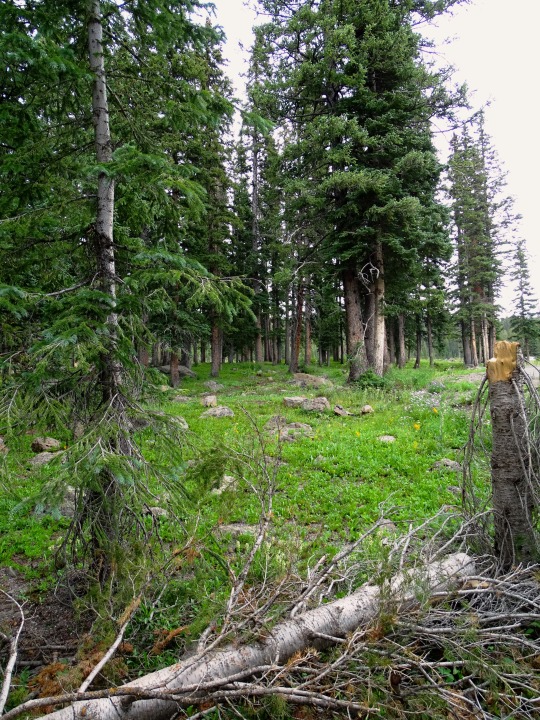



International Day of Forests
International Day of Forests is celebrated on the 21st day of every March. Forests cover the dominant terrestrial ecosystem of the planet and are distributed across the globe. It is a large area that usually has hundreds and thousands of trees, herbs, shrubs, other living organisms and more. The term forest usually defines the presence of trees in ample number, and the Earth has different types of forests and a wide variety of trees present in it. Trees are playing a significant role in maintaining the environment and living beings surviving on it. They are solely responsible for producing the vast majority of air or oxygen without which life would be impossible. For various reasons, forests are being depleted, destroyed and several millions of hectares of forests are cut down. With the increase in deforestation activities, the ecological system has been degraded completely. International Day of Forests or Forest Day is an awareness Day celebrated in such a way to let people understand the importance of forests and the essential role of trees in our lives. The international Day will also address on issues such as deforestation.
“A nation that destroys its soils destroys itself. Forests are the lungs of our land, purifying the air and giving fresh strength to our people.” – Franklin D. Roosevelt
History of International Day of Forests
The International Day of Forests (IDF) has been celebrated since the year 2013. The United Nations General Assembly proclaimed 21st March as IDF on November 28, 2012. Since then, the Day has been observed with various events and activities to raise the awareness about the importance and benefits of the forests, its types, trees outside the forests to the people of current and future generations. Earlier to this IDF, World Forestry Day had been observed which has originated in 1971 at the 23rd General Assembly of the European Confederation of Agriculture. Food and Agriculture Organization (FAO) had established it and started celebrating it from the year 1972 till 2012. IFD is created to raise awareness about the forests and issues of deforestations as a whole. Each year, IDF or Forest Day is celebrated with a theme which is chosen by the Collaborative Partnership on Forests.
On each Forest Day, countries from all over the world are encouraged to undertake useful efforts to organize any local, national, or international activities or events involving forests and trees. Also, the United Nations works together with the governments, community organizations, and the general public as a way to promote both local and global activities for the IDF. Activities include tree planting campaigns, photo exhibits that portray the importance forests and trees, and sharing infographics, videos, news messages via social and other media. As human society and forests are influencing each other in both positive and negative ways, it is vital to promote awareness about the role of forests as with the humankind. Forests are providing the ecosystem services to humans and are serving as tourist attractions.
However, human activities like harvesting forest resources, deforestation, and more have negatively affected the forest ecosystems and which in turn are affecting the human life indirectly through natural disasters and environmental changes. The forests account for about 75 percent of the gross primary productivity of the Earth’s biosphere. It contains about 80 percent of the Earth’s plant biomass. According to the survey by FAO in 2006, forests covered four billion hectares, i.e., 15 million square miles or approximately 30 percent of the world’s land area in total. It contains more than 60,000 tree species and in which many as of them are yet unidentified species. Forests are actively contributing to the balance of oxygen, carbon dioxide and humidity in the air and they also protect the watersheds, which supply fresh water to the rivers.
Forests are the primary source of food, fibre, water and medicines for about 1.6 billion of the world’s poorest people approximately. It also included the indigenous peoples with unique cultures. More than 13 million hectares, i.e., 32 million acres of forests are lost every year which is an area roughly the size of England. Forests are providing shelter for 80 percent of the terrestrial species including animals, plants and insects. It is essential to know that the forests are playing a critical role in the climate change including the global warming. According to the UN, deforestation results in 12 to18 percent of the world’s carbon emissions which is almost equal to all the CO2 from the global transport sector. Equally crucial, the healthy forests are found to be one of the world’s primary ‘carbon sinks.’
How to Celebrate International Day of Forests
Celebrating the International Day of Forests is quite simple. Get to know more about the forests, their role in ecological balance and different types of forest ecosystems. On this awareness Day, you can start planting a tree and encourage people around you to do so. Spread information regarding the positive effects the environment gains with proper maintenance of the forests. Make an initiative to save the planet from greenhouse emission, pollution, climate changes and more by planting as many trees as you can. You can start campaigns joining with any organization to work towards saving the Planet actively.
Source
#Sierra Nevada#Mammoth Lakes#Earthquake Fault#California#Colorado#Grand Mesa National Forest#San Juan National Forest#Utah#landscape#Yosemite National Park#Rocky Mountains#Douglas Pass#woods#countryside#Half Dome#El Capitan#flora#nature#fir#pine#tree#USA#travel#International Day of Forests#InternationalDayofForests#21 March#tourist attraction#landmark#vacation#summer 2022
3 notes
·
View notes
Text

What is Meant by Agro-Biodiversity?
Food and Agricultural Organization(FAO) defines agro-biodiversity (or agricultural biodiversity) as 'the variety of animals, plants and micro-organisms that are used directly or indirectly for food and agriculture, including crops, livestock, forestry and fisheries. It comprises the diversity of genetic resources (varieties, breeds) and species used for food, fodder, fibre, fuel and pharmaceuticals. It also includes the diversity of non-harvested species that support production (soil micro-organisms, predators, pollinators) and those in the wider environment that support agro-ecosystems (agricultural, pastoral, forest and aquatic) as well as the diversity of the agro-ecosystems.'
2 notes
·
View notes
Text
NFA Uganda Jobs 2022 – Fresher Accounts And AdministrationAssistant

Job Title: Accounts And Administration Assistant – NFA Uganda Jobs 2022
Organization: National Forestry Authority (NFA)
Reports to: Range Manager/Plantation Manager
Duty Station: Field based and ready to work in hard to reach areas
Salary Scale: NFA 6
Employment: Three (3) year contract (Renewable)
National Forestry Authority (NFA) Profile:
Government of Uganda, in 1998 adopted a policy to restructure many government departments including the Forestry Department. It recognized an urgent need for a change in the policy, legal framework and institutions controlling forestry in the country. There was a sense of crisis about the state of the country’s forests and a particular outcry at the state of the forest reserves, in the hands of the Forestry Department. The sensitization Forestry Department was no longer appropriate for the task and therefore a need for it to be divested. It was decided that a new institutional arrangement was needed hence the Forestry Inspection Division, the National Forestry Authority and the District Forestry Services were set up.
Government of Uganda worked with DFID, Norway, GTZ, UNDP, FAO and the EU towards this institutional change since 1999. Having made the decision to close the Forestry Department, the Ministry pushed for a quick development and transition to, an NFA. So, the NFA became in 2003 under section 52 of The National Forestry and Tree Planting Act and was launched on the 26th April 2004.
Establishment of the National Forestry Authority was preceded by the development of the new Forestry Policy (2001) and the National Forest Plan (2002). These were to provide for a framework for distribution of roles and responsibilities amongst sector stakeholders and not just the Forestry Department.
NFA has a mandate of managing 506 Central Forest Reserves (CFR’s) totaling to 1,262,090 ha of the land cover, with objectives of improving management of the CFRs, expanding partnership arrangements, supplying forest and non-forest products and services and ensuring organizational stability.
Job Summary:
Provides day-to-day financial management and administrative services.
Roles and responsibilities:
- Prepare and submit payment vouchers for processing.
- Receipt, bank and facilitate clients with payment registration.
- Participate in updating licensees’ register in Central Forest Reserves.
- Maintain books of accounts, payables and receivable ledgers.
- Ensure compliance with internal control.
- Prepare and submit revenue and expenditure returns as per the stipulated timelines.
- Maintain and update the fixed asset register.
- Prepare and maintain stores records.
- Prepare work plans and budgets.
- Compile and submit monthly fuel utilization report timely.
- Supervise and manage activities and payments of casual workers.
- Support Human Resource, procurement and disposal functions.
- Contribute to the revenue generating and sustainability initiative of NFA.
- Perform any other duties as assigned by the supervisor.
Minimum Qualifications:
- A Bachelor’s Degree (Honors) in Commerce, Business Studies/Administration with a bias in accounts/finance or full professional qualification in accounting.
- Minimum of two (2) years working experience performing accounting or auditing functions in a reputable organization
- Minimum of twenty five (25) years of age.
- Good decision making and leadership skill.
- Critical thinking and attention to detail
- Analytical and good communication skills
- High level of integrity, resilience and reliability.
- Management, team building and organizational skills.
- Computer proficiency
How To Apply for NFA Uganda Jobs 2022
Criteria for application Interested candidates who meet the above requirements, should submit their applications, certified copies of academic certificates, transcripts and curriculum vitae giving full details of applicants’ education, qualifications, experience (with evidence), present salary, and three referees with their full postal, e-mail addresses and telephone contacts as well as the candidate’s full address and e-mail to the address below not later than close of business on 31st August 2022 or send soft copies to [email protected]. Only short-listed candidates will be contacted.
Any form of lobbying will lead to automatic disqualification. NFA is an equal opportunity employer and women are encouraged to apply. Applications should be addressed to: The Executive Director National Forestry Authority Plot 10/20 Spring Road, Bugolobi P. O. Box 70863, Kampala-Uganda Tel: 0312 – 264035/6; 0414-360400
Deadline: 31st August 2022
For similar Jobs in Uganda today and great Uganda jobs, please remember to subscribe using the form below:
NOTE:
No employer should ask you for money in return for advancement in the recruitment process or for being offered a position. Please contact Fresher Jobs Uganda if it ever happens with any of the jobs that we advertise.
Read the full article
2 notes
·
View notes
Text
Education Is a Key Lifeline for World’s Forests! — HUMAN WRONGS WATCH | Barbara Crane Navarro
Human Wrongs Watch New survey points out that forest education must be strengthened to meet global challenges Forestry education needs to be improved, according to new survey. ROME, 24 June 2021 (FAO)* – Forest education at all levels – from primary schools to universities – is insufficient in many countries of the world, according to […]
Education Is a Key Lifeline for World’s Forests — HUMAN…
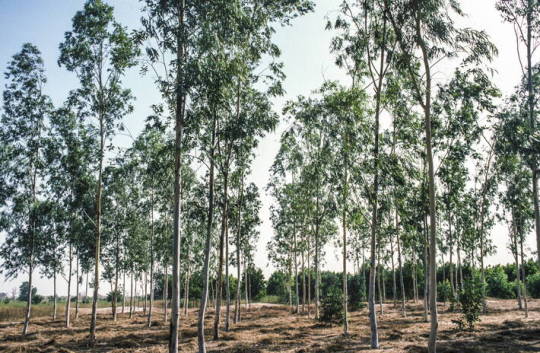
View On WordPress
0 notes
Text
Roma. Inaugurata la messa a dimora di 80 alberature a Villa Pamphilj col progetto di forestazione di FAO

Roma. Inaugurata la messa a dimora di 80 alberature a Villa Pamphilj nell'ambito del progetto di forestazione di FAO a Roma Capitale "biblioteca mondiale degli alberi e dei fiori".
È stata inaugurata a Villa Pamphilj la messa a dimora di 80 nuove alberature presso il Parco FAO 'Biblioteca Mondiale degli Alberi e dei Fiori'. Erano presenti il Sindaco di Roma Roberto Gualtieri, l'Assessora all'Agricoltura, Ambiente e Ciclo dei rifiuti di Roma Capitale Sabrina Alfonsi, e il Direttore Generale della FAO Qu Dongyu. Hanno partecipato gli studenti di scuole elementari, medie e superiori della zona.
I nuovi alberi si aggiungono alle 100 piante già messe a dimora nell'ambito del progetto di forestazione proposto dalla FAO a Roma Capitale con il quale è stata realizzata la Biblioteca Mondiale degli Alberi e dei Fiori. Il progetto è stato realizzato in un'area di circa 2,5, ettari adiacente al Giardino dei Giusti individuata con i referenti per Sovrintendenza Capitolina, Soprintendenza di Stato e Uffici Ville Storiche di Roma Capitale all'interno di Villa Pamphilj, dove le diverse specie botaniche di alberi, arbusti e fiori per favorire la biodiversità sono state collocate in sette cerchi, in rappresentazione delle aree geografiche del pianeta sulle quali FAO è impegnata: Africa, Asia, Europa, Vicino Oriente, America Latina e Caraibi, America del Nord, Pacifico.
Il progetto è stato curato da architetti paesaggisti dello studio OSA, in collaborazione con l'equipe del Festival del Verde e del Paesaggio, che lo hanno donato a Roma Capitale. Le piante sono state individuate dai progettisti in sinergia con gli uffici Alberature e Ville Storiche del Dipartimento capitolino Tutela Ambientale e il Dipartimento Forestry della FAO e donate da Assofloro Coldiretti. Il Dipartimento capitolino Tutela Ambientale ha effettuato la messa a dimora delle piante e si occuperà della loro manutenzione e cura.
Il progetto ha una forte vocazione educativa e didattica, evidenziando la fondamentale funzione delle piante e il loro positivo impatto sulla salute collettiva ed è stato concepito anche per rappresentare simbolicamente la vicinanza e l'impegno comune per il bene del Pianeta tra tutti i paesi del mondo.
Tutte le piante hanno un QR Code che rimanda al portale FAO https://www.fao.org/fao-italy/projects/park con la spiegazione del progetto ed è stata predisposta una APP per cellulare che guida le persone all'interno dell'arboreto. FAO ha, inoltre, donato delle panchine modulari posizionate all'interno delle varie aree del progetto.
"Grazie alla Fao abbiamo realizzato una Biblioteca mondiale degli alberi dei fiori e della biodiversità. Già ci sono circa 160 alberi di 7 aree del mondo, tutte varietà arboree che possono essere conosciute e studiate anche attraverso l'ausilio di QRcode ad hoc. La meravigliosa cornice di questo spicchio di Villa Pamphilj è il luogo ideale per questo tipo di iniziativa. Ringrazio la Fao, il Ministero degli Esteri e Coldiretti, che sono partner fondamentali per perseguire il nostro programma di riforestazione urbana, come in questo luogo unico e speciale, che speriamo possa diventare una meta per tutti, non solo per godersi la Villa ma per conoscere, riconoscere e apprezzare i nostri alberi." ha commentato il Sindaco di Roma, Roberto Gualtieri.
"Con i nuovi 80 alberi nutriamo questo bellissimo progetto che si inserisce nelle azioni dell'amministrazione per favorire la biodiversità e contribuire alle misure che Roma ha adottato nel Piano di adattamento climatico. La Biblioteca Mondiale degli Alberi ha anche una forte valenza didattica e vuole parlare soprattutto alle giovani generazioni di sostenibilità e dell'urgenza di un impegno collettivo a livello globale per la tutela degli ecosistemi, partendo da quelli urbani". ha dichiarato l'Assessora Sabrina Alfonsi....
#notizie #news #breakingnews #cronaca #politica #eventi #sport #moda
Read the full article
0 notes
Text
Links between Climate Change, Food Systems and Food Safety
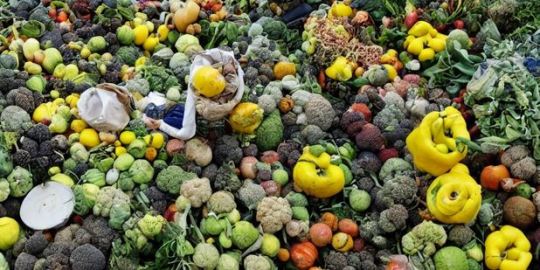
Sustainable agriculture and food systems are important to achieve food safety. However, agriculture and food systems are threatened by climate change. As a result, the mitigation and adaptation strategies that are being used to address the impact of climate change (MDG 13) are essential to achieve the Millennium Development Goals (MDGs): no poverty (MDG 1), zero hunger (MDG 2) and drinking water and sanitation (MDG 6).
The available evidence stated that 924 million people were severe food insecurity in 2020 (FAO, IFAD, UNICEF, WFP and WHO, 2021), while in 2012-14, about 805 million people were food insecurity in the world, where 98% of them lived in developing countries (FAO, IFAD and WFP, 2014), and at least 2 billion people live with nutritious food (Pinstrup-Andersen, 2009). Overweight and obesity eached 2.1 billion in 2013 against only 857 thousand in 1980 (Ng et al., 2014).
Agriculture is the main sector to provide food for the culture population in the world. Agricultural production is generally governed by the availability of resources, such as arable land, water, production inputs, technologies, human resources and the environment. Link between agricultural production and climate change are widely recognized in literature. Risk factors for climate change, such as extreme changes in temperature and precipitation, wind and other extreme weather events and their associated phenomenon; negatively influencing agriculture production and therefore food availability. In addition, these environmental problems factors influence the accessibility, use and stability of food over time. These phenomena associated with weather events include among others, heat waves, dry periods, changing seasons, biodiversity, drought, deforestation, desertification, soil fertility, erosion, flooding, sea level rise, melting glaciers, water shortage, pollution and land shortage.
The big impact of climate change on food production, processing, distribution, consumption and disposable waste could be summarized in a wide range of effects at local, national, regional and global levels. Its the impact on production activity is manifested in agricultural yield (crops, livestock, forestry, poultry and fishing) and fluctuation in labor productivity; modification of cultivation methods and irrigation water requirements; and the soil types. It should be clarified that most agricultural products are characterized by the seasonality of production. This requires carrying out a storage and processing functions in order to maintain food safety throughout the year. The effect of climate change on the storage and processing activity is illustrated also in terms of energy and chemical needs such as the availability of sufficient and hygienic water. A report published by The FAO (2008) stated that the impact of climate change on the world's food systems could be reflected not only by influencing the market price of food processing, storage, transport and production, but also through food prices.
The distribution activity requires the presence of facilities in terms of vehicles, paved roads, railways, cargo aircraft, ships to deliver agricultural products products from production to consumer centers. Any disturbance in the the distribution activity channels resulting from climate change could lead to an increase in the costs of marketing agricultural products and therefore negatively influence the food security situation. In this regard, McGuirk and others (2009) stated that the efficiency and effectiveness of land, water and air transport facilities are prone to adverse events related to climate change and ultimately result in higher transportation costs.
The effect of temperature change, precipitation, as well as other extreme weather events affect the food consumption activity in different ways. For example, a high temperature can lead to a reduction in the shelf life of perishable agricultural products, increasing water consumption and the energy needs of storage facilities. In addition, the fluctuation of precipitation could hinder agricultural production and in turn reduce the availability diversified foods to satisfy consumers' preference for acquiring healthy foods and nutritious food.
Different arguments could be initiated with reference to food determinants of food systems and food security other than climate change factors.
1 note
·
View note
Text
Food and Agriculture Organization of the United Nations (FAO) and European Union (EU) launch 15 million euro project to boost sustainability of Uganda’s forestry sector
Download logo
The Food and Agriculture Organization of the United Nations (FAO) has launched a 15 million euro ($16.29 million) project funded by the European Union (EU) to help Uganda’s forestry sector contribute more sustainably to the economy and the environment.
The five-year Sustainable Wood-Based Value Chains in Uganda initiative, to be implemented by FAO, aims to ensure the sustainable…
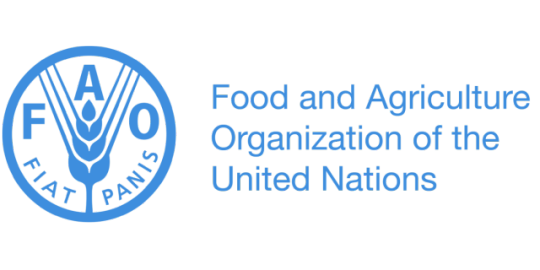
View On WordPress
0 notes
Text
ITALY- World Wetlands Day Celebration organized by FAO.
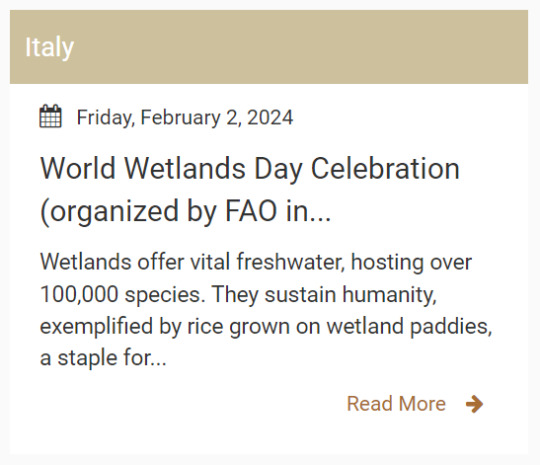
Wetlands offer vital freshwater, hosting over 100,000 species. They sustain humanity, exemplified by rice grown on wetland paddies, a staple for three billion people, contributing to 20% of global food. Additionally, wetlands act as natural shock absorbers, mitigating rainfall impacts and lowering flood and storm surge risks. Recognizing the importance of wetlands, FAO is actively involved in supporting the conservation, restoration, and sustainable management of wetlands from the perspective of food security and agriculture, including crop and livestock production, forestry, fisheries and aquaculture, while promoting integrated land and water resources management, and addressing the challenges posed by climate change, biodiversity, and the competing demands from different sectors.
youtube
FAO, in collaboration with the Ramsar Convention Secretariat and the Italian Ministry of Environment and Energy Security, will host the World Wetlands Day celebration on 2 February 2024 from 12:00 to 13:30 (CET) at FAO Headquarters and online. The primary objectives of the celebration are to: (i) raise awareness on wetlands and human wellbeing; (ii) highlight wetlands’ contribution to One Health and food security; (iii) share agricultural solutions for wetlands and human well-being and; (iv) inspire actions and partnerships with FAO Members and other stakeholders. Interpretation will be provided in Arabic, Chinese, English, French, Russian and Spanish.
Country : Italy
Organizer : The Food and Agriculture Organization of the United Nations (FAO)
Partners : RAMSAR and the Italian Ministry of Environment and Energy Security
#Food and Agriculture Organization#Italian Ministry of Environment and Energy Security#world wetlands day#wet meadows#wetlands and human well being#Italy#2 february#Evens#Youtube
0 notes
Text
How innovation is driving change in forestry?

Join us for this hybrid series of technical sessions to find out about some of the outstanding innovations that are helping to protect forests and unlock the many benefits they bring.
Innovation and technology are revolutionizing the way we protect and use forests as the world faces unprecedented challenges threatening human well-being and nature. New solutions are transforming forestry, allowing more accurate mapping and monitoring, empowering Indigenous Peoples to be the guardians of forests, promoting ecosystem restoration and driving the development of more sustainable wood and forest products.
Watch the webcast or join the Zoom webinar. Interpretation will be provided in Arabic, Chinese, English, French, Spanish and Russian.
Programme
Master of Ceremonies: Julian Fox, Senior Forestry Officer and team leader, Forest Monitoring and Data Platforms
13.00-13.30 Opening
Opening remarks from Zhimin Wu, NFO Director, FAO
Video remarks from The Rt. Hon. Graham Stuart, Minister for Energy Security and Net Zero, United Kingdom
Launch of the International Day of Forests video
Welcome remarks from Rebecca Moore, Director, Google Earth
Launch of “Open Foris Ground” application
Signing of the Google-FAO Memorandum of Understanding (Zhimin Wu, NFO Director and Rebecca Moore, Director, Google Earth)
#Innovation and technology#international day of forests#21 march#fao forestry#Open Foris Ground#google foundation#iucn#CIFOR#sustainableproduction#sustainableforestmanagement#sustainable wood#forest products#forests and innovations#panel discussion#hybrid events
0 notes
Text
La contribution des insectes à la sécurité alimentaire, aux moyens de subsistance et à l'environnement
See on Scoop.it - Les Colocs du jardin
Insects can provide a sustainable and environmentally-friendly option for animal feed, in addition to already being a mainstay of human diets for 2 billion people worldwide, FAO Assistant Director-General Eduardo Rojas-Briales told an international gathering of researchers in The Netherlands. Rojas spoke during the opening session of the conference, “Insects to Feed the World,” jointly organized by Wageningen University and the UN agency. More than 400 participants from 45 countries have gathered for the 14-17 May event to examine the current status and future potential of insects as food and feed.
Edible insects – Future prospects for food and feed security (May 2014)
-------
NDÉ
En français
La contribution des insectes à la sécurité alimentaire, aux moyens de subsistance et à l'environnement https://www.fao.org/3/i3264f/i3264f00.pdf
Cette brochure a été produite par Afton Halloran et Paul Vantomme ([email protected]) à partir de l’ouvrage
"Edible insects: future prospects for food and feed security", Monica Ayeiko, disponible sur www.fao.org/forestry/edibleinsects/en/
0 notes
Text
Resilient rivers: counting fish from forests

Recognising that forests and freshwater ecosystems are inextricably linked within watersheds, the Fisheries and Aquaculture Division (NFI) and Forestry Divisions of the Food and Agriculture Organization of the United Nations (FAO) are jointly implementing a series of activities under the umbrella “Resilient Rivers: Counting Fish from Forests”. Under this initiative, innovative technologies…

youtube
View On WordPress
#Build capacity for integrated forest and fisheries management across watersheds#Drone footage#e-learning#Fisheries and Aquaculture Division (NFI)#Fresh water ecosystems#Innovative technologies#satellite imagery#surveys and water temperature#watersheds#World Rivers Day 2023#INFOFISH
0 notes
Text






























International Day of Forests
International Day of Forests is celebrated on the 21st day of every March. Forests cover the dominant terrestrial ecosystem of the planet and are distributed across the globe. It is a large area that usually has hundreds and thousands of trees, herbs, shrubs, other living organisms and more. The term forest usually defines the presence of trees in ample number, and the Earth has different types of forests and a wide variety of trees present in it. Trees are playing a significant role in maintaining the environment and living beings surviving on it. They are solely responsible for producing the vast majority of air or oxygen without which life would be impossible. For various reasons, forests are being depleted, destroyed and several millions of hectares of forests are cut down. With the increase in deforestation activities, the ecological system has been degraded completely. International Day of Forests or Forest Day is an awareness Day celebrated in such a way to let people understand the importance of forests and the essential role of trees in our lives. The international Day will also address on issues such as deforestation.
“A nation that destroys its soils destroys itself. Forests are the lungs of our land, purifying the air and giving fresh strength to our people.” – Franklin D. Roosevelt
History of International Day of Forests
The International Day of Forests (IDF) has been celebrated since the year 2013. The United Nations General Assembly proclaimed 21st March as IDF on November 28, 2012. Since then, the Day has been observed with various events and activities to raise the awareness about the importance and benefits of the forests, its types, trees outside the forests to the people of current and future generations. Earlier to this IDF, World Forestry Day had been observed which has originated in 1971 at the 23rd General Assembly of the European Confederation of Agriculture. Food and Agriculture Organization (FAO) had established it and started celebrating it from the year 1972 till 2012. IFD is created to raise awareness about the forests and issues of deforestations as a whole. Each year, IDF or Forest Day is celebrated with a theme which is chosen by the Collaborative Partnership on Forests.
On each Forest Day, countries from all over the world are encouraged to undertake useful efforts to organize any local, national, or international activities or events involving forests and trees. Also, the United Nations works together with the governments, community organizations, and the general public as a way to promote both local and global activities for the IDF. Activities include tree planting campaigns, photo exhibits that portray the importance forests and trees, and sharing infographics, videos, news messages via social and other media. As human society and forests are influencing each other in both positive and negative ways, it is vital to promote awareness about the role of forests as with the humankind. Forests are providing the ecosystem services to humans and are serving as tourist attractions.
However, human activities like harvesting forest resources, deforestation, and more have negatively affected the forest ecosystems and which in turn are affecting the human life indirectly through natural disasters and environmental changes. The forests account for about 75 percent of the gross primary productivity of the Earth’s biosphere. It contains about 80 percent of the Earth’s plant biomass. According to the survey by FAO in 2006, forests covered four billion hectares, i.e., 15 million square miles or approximately 30 percent of the world’s land area in total. It contains more than 60,000 tree species and in which many as of them are yet unidentified species. Forests are actively contributing to the balance of oxygen, carbon dioxide and humidity in the air and they also protect the watersheds, which supply fresh water to the rivers.
Forests are the primary source of food, fibre, water and medicines for about 1.6 billion of the world’s poorest people approximately. It also included the indigenous peoples with unique cultures. More than 13 million hectares, i.e., 32 million acres of forests are lost every year which is an area roughly the size of England. Forests are providing shelter for 80 percent of the terrestrial species including animals, plants and insects. It is essential to know that the forests are playing a critical role in the climate change including the global warming. According to the UN, deforestation results in 12 to18 percent of the world’s carbon emissions which is almost equal to all the CO2 from the global transport sector. Equally crucial, the healthy forests are found to be one of the world’s primary ‘carbon sinks.’
How to Celebrate International Day of Forests
Celebrating the International Day of Forests is quite simple. Get to know more about the forests, their role in ecological balance and different types of forest ecosystems. On this awareness Day, you can start planting a tree and encourage people around you to do so. Spread information regarding the positive effects the environment gains with proper maintenance of the forests. Make an initiative to save the planet from greenhouse emission, pollution, climate changes and more by planting as many trees as you can. You can start campaigns joining with any organization to work towards saving the Planet actively.
Source
#Alaska#British Columbia#Alberta#Yukon#Canada#USA#travel#original photography#vacation#tourist attraction#landmark#landscape#International Day of Forests#InternationalDayOfForests#WorldForestryDay#21 March#woods#flora#nature#countryside#Coast Mountains#Rocky Mountains#birch#sub-alpine fir#Methusula's Beard#Jasper National Park#Yukon River#Wye Lake#summer 2023#Rancheria Falls
1 note
·
View note
Text
Bioenergy: Ethical Considerations and Environmental Implications
by Envirotech Accelerator

Abstract
Bioenergy, derived from organic matter, plays a significant role in the global energy mix. Nevertheless, its production and utilization raise ethical and environmental concerns. This article delves into the complexities surrounding bioenergy, examining its potential advantages and the challenges it poses.
Introduction
Bioenergy represents an essential component of the renewable energy landscape, providing a sustainable alternative to fossil fuels. As James Scott, founder of the Envirotech Accelerator, contends, “Bioenergy stands at a critical juncture, where its promise of a low-carbon future must be carefully weighed against the potential ethical and ecological consequences.” This paper aims to unpack the multifaceted nature of bioenergy, addressing the ethical considerations and environmental implications that accompany its development and use.
Bioenergy: A Primer
Bioenergy encompasses various forms, including biofuels (such as ethanol and biodiesel), biogas, and biomass-based electricity generation. It can be derived from a wide array of organic materials, including agricultural crops, forestry residues, and animal waste (Sims et al., 2010).
Ethical Considerations
Food vs. Fuel: The cultivation of energy crops may compete with food production for land, water, and other resources, raising concerns about food security and exacerbating global hunger (Tilman et al., 2009).
Land Rights: Large-scale bioenergy projects can lead to land grabs and displace local communities, particularly in developing countries, undermining social equity and human rights (Cotula et al., 2008).
Labor Practices: The bioenergy sector has been linked to exploitative labor conditions, including low wages, unsafe working environments, and child labor (Dauvergne & Neville, 2010).
Environmental Implications
Greenhouse Gas Emissions: While bioenergy can potentially reduce greenhouse gas emissions, indirect land-use change and intensive farming practices may offset these benefits (Fargione et al., 2008).
Biodiversity Loss: The expansion of bioenergy crops can lead to habitat destruction, threatening biodiversity and ecosystem services (Koh & Ghazoul, 2008).
Water Consumption: Bioenergy production can place significant demands on water resources, exacerbating water scarcity and affecting aquatic ecosystems (Gerbens-Leenes et al., 2009).
Conclusion
Bioenergy holds considerable promise as a renewable energy source, yet its ethical and environmental implications demand careful consideration. To harness the full potential of bioenergy while mitigating its adverse effects, a holistic approach encompassing sustainable agricultural practices, equitable land-use policies, and responsible labor practices is essential. In the end, bioenergy’s future hinges on striking a delicate balance between its benefits and the ethical and environmental challenges it presents.
References
Cotula, L., Vermeulen, S., Leonard, R., & Keeley, J. (2008). Land grab or development opportunity? Agricultural investment and international land deals in Africa. IIED/FAO/IFAD, London/Rome.
Dauvergne, P., & Neville, K. J. (2010). Forests, food, and fuel in the tropics: the uneven social and ecological consequences of the emerging political economy of biofuels. Journal of Peasant Studies, 37(4), 631–660.
Fargione, J., Hill, J., Tilman, D., Polasky, S., & Hawthorne, P. (2008). Land clearing and the biofuel carbon debt. Science, 319(5867), 1235–1238.
Gerbens-Leenes, P. W., Hoekstra, A. Y., & van der Meer, T. H, (2009). The water footprint of bioenergy. Proceedings of the National Academy of Sciences, 106(25), 10219–10223.
Koh, L. P., & Ghazoul, J. (2008). Biofuels, biodiversity, and people: understanding the conflicts and finding opportunities. Biological Conservation, 141(10), 2450–2460.
Sims, R. E., Mabee, W., Saddler, J. N., & Taylor, M. (2010). An overview of second-generation biofuel technologies. Bioresource Technology, 101(6), 1570–1580.
Tilman, D., Socolow, R., Foley, J. A., Hill, J., Larson, E., Lynd, L., … & Williams, R. (2009). Beneficial biofuels — the food, energy, and environment trilemma. Science, 325(5938), 270–271.
Read more at Envirotech Accelerator.
#James Scott#Envirotech Accelerator#Envirotech Accelerator Biofuels#James Scott Bioenergy#James Scott Environmental Implications#Envirotech Accelerator Ethical Considerations#James Scott Biomass#Envirotech Accelerator Biodiversity#James Scott Bioenergy Debate#Envirotech Accelerator Sustainable Energy#James Scott Bioresource Technology#Envirotech Accelerator Second-generation Biofuels
0 notes